The All-New, 4th-Generation Omega Seamaster Planet Ocean (Incl. Video)
Omega’s ultra-robust dive watch, the Planet Ocean, enters its 4th generation, and changes almost everything…
As the longest-running collection of Omega, the Seamaster has all the credentials to be called emblematic. While the model debuted in 1948, it’s mostly the launch in 1957 of the Seamaster 300 that gave the collection its true diving edge. But we have to keep in mind that there’s more than one Seamaster. The name encapsulates several sub-collections, such as the Aqua Terra, the Ploprof or the most iconic of them all, the one that made it to Bond’s wrist, the Seamaster Diver 300M. And at the top of the range, there’s the Planet Ocean 600m, the brand’s technological flagship, created in 2005 and characterised, amongst multiple elements, by its orange bezel. After a second-gen in 2011 and a third-gen in 2016, the collection that celebrates its 20th anniversary this year, enters its fourth generation. And the new Omega Seamaster Planet Ocean isn’t a soft mid-life facelift, but a rather drastic change of design. Angular case, no more HEV, no-date display, new bracelet… The 4th Gen PO is nothing you’ve seen before.
We’re not going to do the entire story of the Seamaster line and Planet Ocean collection here. This is something that we’ve extensively covered in several articles, including a video about the origins of the model, as well as a recent Evergreen article covering every single detail about the first three generations of Seamaster Planet Ocean 600m. If that’s something you need for context, sit back and enjoy reading. If not, then let’s get straight to the all-new, fourth Generation Omega Seamaster Planet Ocean, released in time for the model’s 20th anniversary.
A Strong Design Evolution for the Planet Ocean
Even if the Seamaster PO600m has known three generations in the past (2005, 2011 and 2016), each bringing its lot of new features, such as the ceramic bezel in 2011 or the Master Chronometer movements in 2016, the design of the Planet Ocean has remained more or less the same over the years, with only minor touches to give the watch more resistance, more advanced features or more modernity.
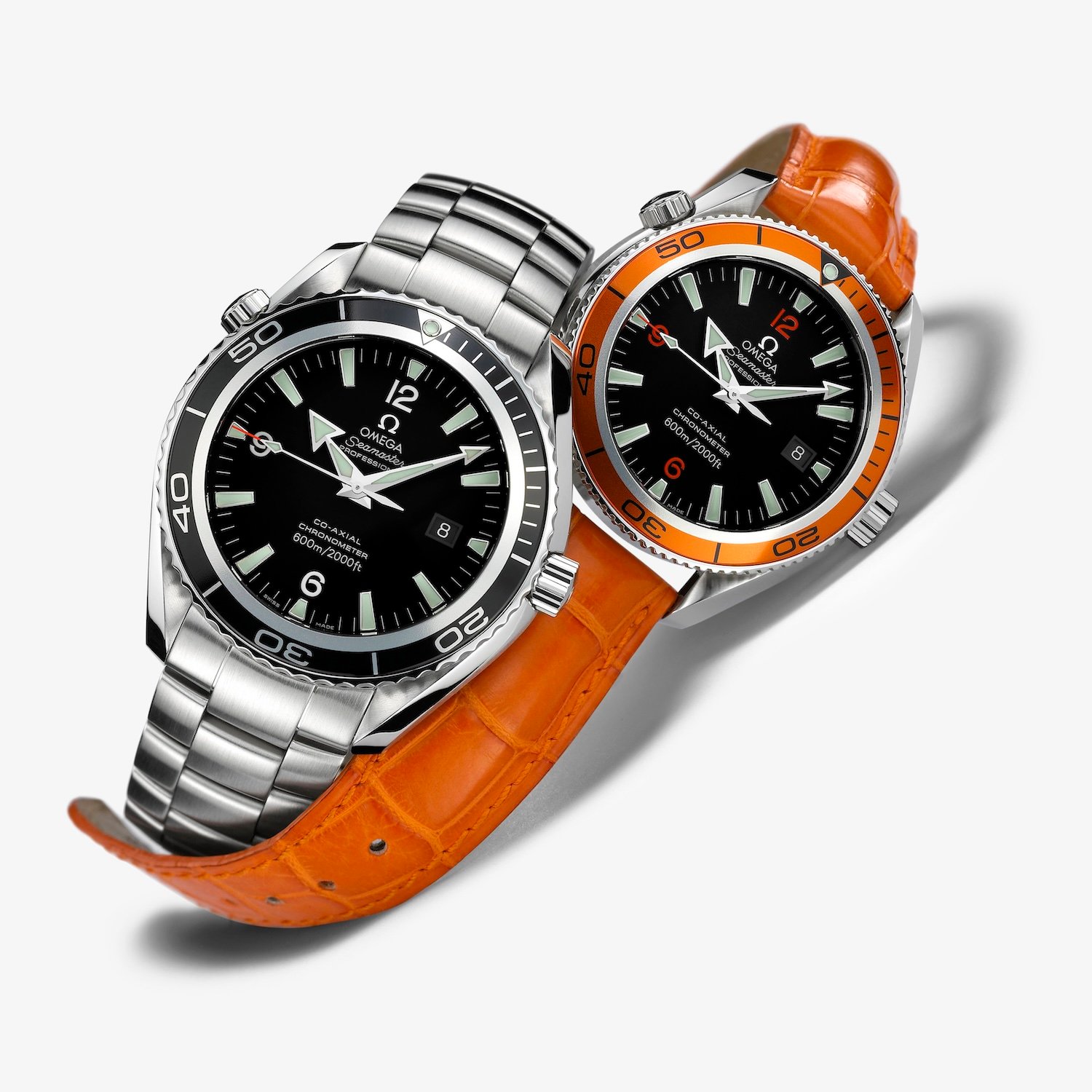
Looking at the 2005 model or the latest releases of the third generation of PO600m, there’s an undeniable common theme. The Seamaster PO has always been a somewhat beefed-up version of the Seamaster Diver 300M, sharing the same overall inspiration. Both watches were using 1960s models as a reference. The Planet Ocean has, since its launch, been characterised by the following elements: a slightly asymmetrical case with classic Omega twisted lyre-shaped lugs, an overall rounded design, a helium escape valve at 10 o’clock, a slightly recessed crown within the caseband, the latter having a curved polished bevel, a dial with trapezoidal applied markers, Arabic numerals at 6, 9 and 12 o’clock, broad arrowhead hands, a date window at 3 o’clock, a wide diving bezel that has evolved in material over the years but retained the same overall design, and a bracelet attached to the case thanks to classic end-links, again rounded. And very often, orange accents.
Well… forget almost everything you know about the Seamaster Planet Ocean, as for the 20th anniversary, this fourth generation makes a clean slate of the past. Omega has decided to give its flagship dive watch collection its own distinct identity, differentiating it from the SMP and Diver 300M. Angular, masculine, more technical, less classic Omega maybe, but also back to more reasonable proportions…
The evolution is obvious. The 4th-Gen PO gets rid of its curves, doesn’t feature lyre-shaped lugs anymore, has no more resemblance to the 300M, and even the divisive helium valve is gone. This decision, explained by the fact that modern manufacturing makes its presence obsolete, will certainly be as divisive as its initial presence. Some will be happy, some will regret it. Even without it, the PO retains the same 600m water-resistance, without the risk of helium build-up inside the case.
There’s one element carried over from the 6000m Ultra-Deep collection, which doesn’t feature a HEV either. Indeed, this new PO features an inner titanium ring (around the crystal, internal to the bezel) that provides the material strength required to seal the watch when diving at depth. The inner ring was an aesthetic part of the Planet Ocean in 2005 and the Seamaster 300 of the 1960s. With this new technical design, Omega has been able to keep the same look, but also give the inner ring a functional benefit that is suitable for the watch’s 600m water-resistance.
A point that will surely be appreciated is the return to the original 42mm diameter. Indeed, the 2025 Seamaster Planet Ocean was designed to be more modern, yet smaller and easier to wear, while maintaining the same diving credentials. The thickness is now 13.8mm, a whopping 2.3mm decrease compared to the previous generation, measured at 43.5mm x 16.1mm. In the same vein, the new and angular case has been shortened, and the bracelet is now integrated differently, with a first link that’s far shorter and articulated. As such, this serious dive watch sits more comfortably on most wrists. A flat sapphire crystal, rather than a domed element, is also responsible for this slimmer profile.
Made mostly of stainless steel, with a solid titanium screwed caseback (no more sapphire back here), it is sharper, edgier and certainly nothing like you’ve ever seen in the collection. Omega claims to have sourced inspiration from the 1980s, with models like the Seamaster 120m Mayol. On top, the bezel has also been retouched. There’s a more pronounced serrated profile, and this unidirectional rotating bezel features a wide ceramic insert with a simplified diving scale, marking a break in the 20-year lineage. The insert is available in black, blue, and, of course, orange, the signature colour of the collection since its release in 2005.
Classic PO 600m dial
While the case certainly is new, the dial of this fourth-generation Omega Seamaster Planet Ocean feels like an evolution rather than a revolution. All models, regardless of the bezel colour, rely on a legible and highly contrasted matte black dial. Omega has retained the signature arrowhead hands and the bold trapezoidal applied indexes that are filled with Super-LumiNova (both mildly larger), as well as Arabic numerals at cardinal points, resulting in an overall familiar look.
There are, however, mild evolutions to give the watch more modernity and to remain consistent with the new, angular and sharp edge of the watch. The numerals are now open-work and squarer, with a sharper look to match the case and bracelet. It’s also a nod to the original Planet Ocean, which also featured (printed) open-work numerals. And as you can see, there’s now an applied numeral at 3 o’clock, since the new PO is a no-date watch.
Depending on the chosen edition, the dial shows subtle differences. The watch illustrating this article features varnished Arabic numerals in matte orange to match the bezel’s orange ceramic insert. The classic black version features a diving scale made of white enamel and is accompanied by rhodium-plated Arabic numerals. Finally, the blue edition also features a white enamel diving scale, but relies on varnished Arabic numerals in a matte white finish. The finishing touches include printed, connected minute scales between the hour markers, an applied logo, and printed details of the watch’s model and movement.
Master Chronometer Movement
No surprises, however, inside the case. The new Planet Ocean relies on Omega’s in-house automatic calibre 8912, which also powers the Ultra-Deep. This movement, with Co-Axial escapement and Master Chronometer certification, beats at a rate of 25,200vph. Thanks to a twin-barrel system, the power reserve is rated at 60 hours, and it features a practical time zone feature, so you can adjust the hour hand by one-hour increments, without disturbing the rest of the display. And although we can’t see it, the movement is decorated in Omega’s typical style. This means Geneva waves in arabesque on the rotor and bridges, blackened balance wheel and screws, and red infilled engravings. Proven mechanics, strong precision, and everything you’d expect from the brand in terms of innovation.
A new, slimmer bracelet
The fourth-generation Omega Seamaster Planet Ocean is released as a collection of 7 models, with each reference available either on a steel bracelet or a black rubber strap, with the orange edition also available on a bold orange rubber strap. The rubber straps are connected to the case thanks to steel end-links, offering a pleasant feeling of integration, in line with the angular shape of the watch. There’s also a bracelet effect in 3D, again to give them more consistency. These are closed by a classic foldover clasp (no micro-adjustment).
More importantly, there’s a new steel bracelet to match the edgier design. It is now a flat 3-link design, with brushed outer links and polished inner links, all faceted. The bracelet is slimmer and now appears almost integrated into the case, with a first link that’s articulated for improved comfort. The bracelet is closed by a folding clasp that’s adjustable to six positions and also features a diving extension.
Thoughts, availability & Price
There’s no hiding that this 2025 Seamaster Planet Ocean collection marks a strong break in the collection, giving it its own style, much different from anything done before in the PO collection, but also strongly differentiated from the other Seamaster models, in particular the Diver 300M. It surely retains familiar traits on the dial and, as you’d expect from Omega, the overall quality is undeniable. So are the specs, above industry average.
While the new, more angular and edgier design of the case and bracelet will generate discussion – and on this topic, as always, to each his own – the comeback to a reasonable 42mm and a much slimmer profile can only be appreciated, especially when it doesn’t compromise the diving credentials. In a way, it’s a good thing if this watch sparks debate. The Seamaster Planet Ocean, without a HEV, with a sharper design, has simply become something different from what it used to be. It’s a more fitted design, as Omega states, a watch that looks more at the future than the past. It’s a bold move, one that will certainly be a bit divisive, but sometimes it’s good to make a clean slate of the past and start fresh. Let us know what you think in the comments.
The 2025, fourth-generation Omega Seamaster Planet Ocean is released as part of the permanent collection and will be priced at CHF 6,700 (black and blue) or CHF 6,900 (orange) on a rubber strap and CHF 7,200 (black and blue) or CHF 7,400 (orange) on a steel bracelet – all prices are excluding taxes. For more details, please visit omegawatches.com.

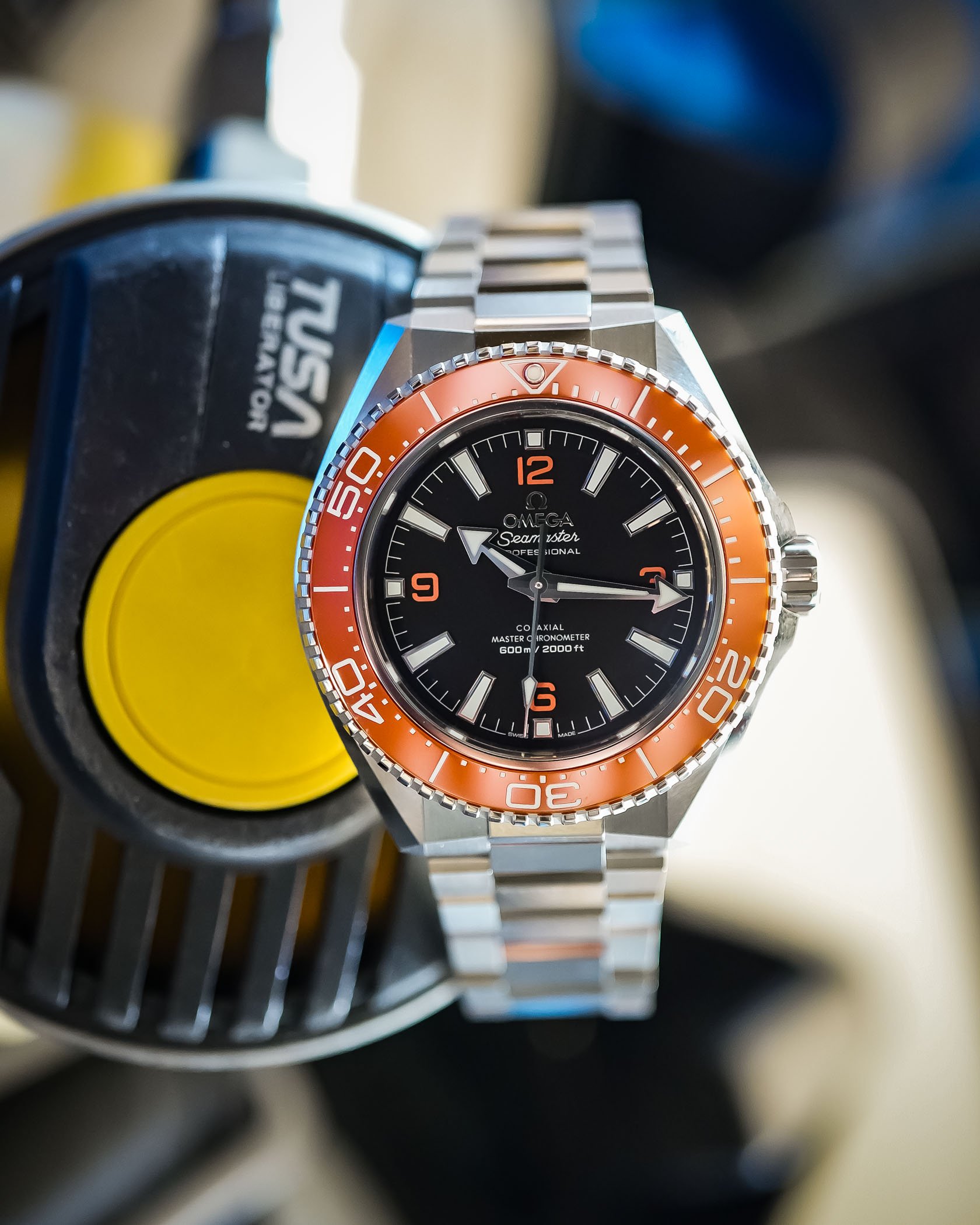
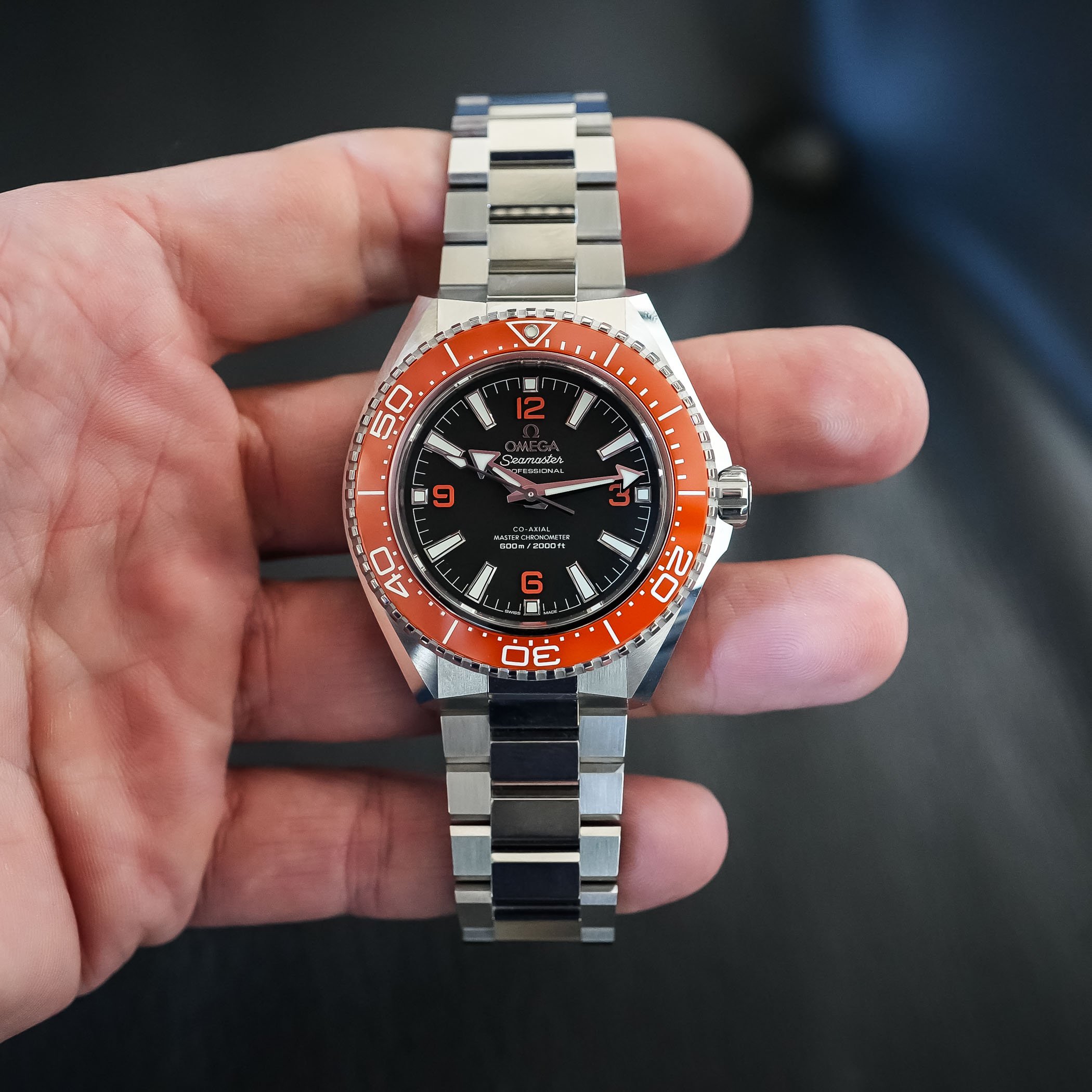
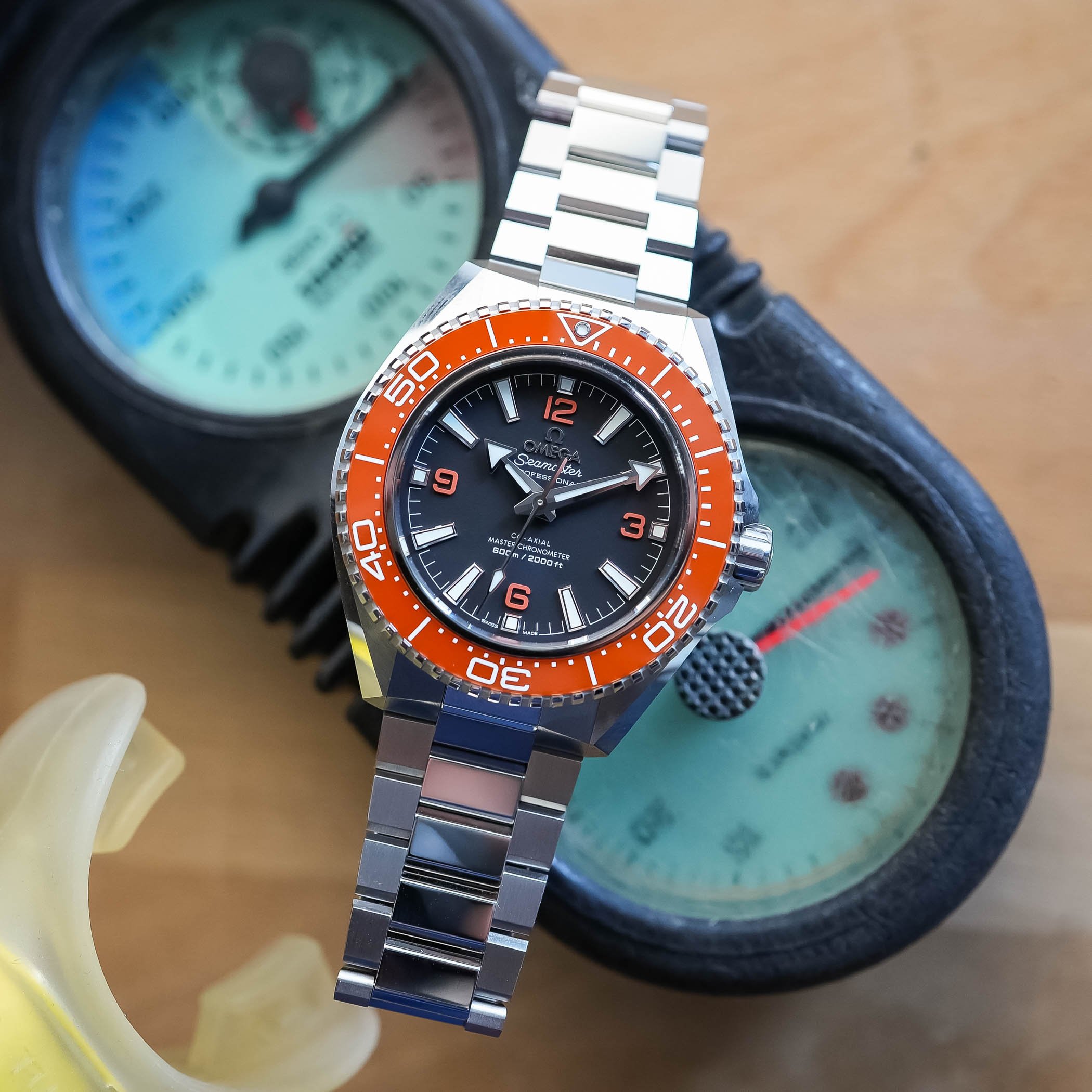

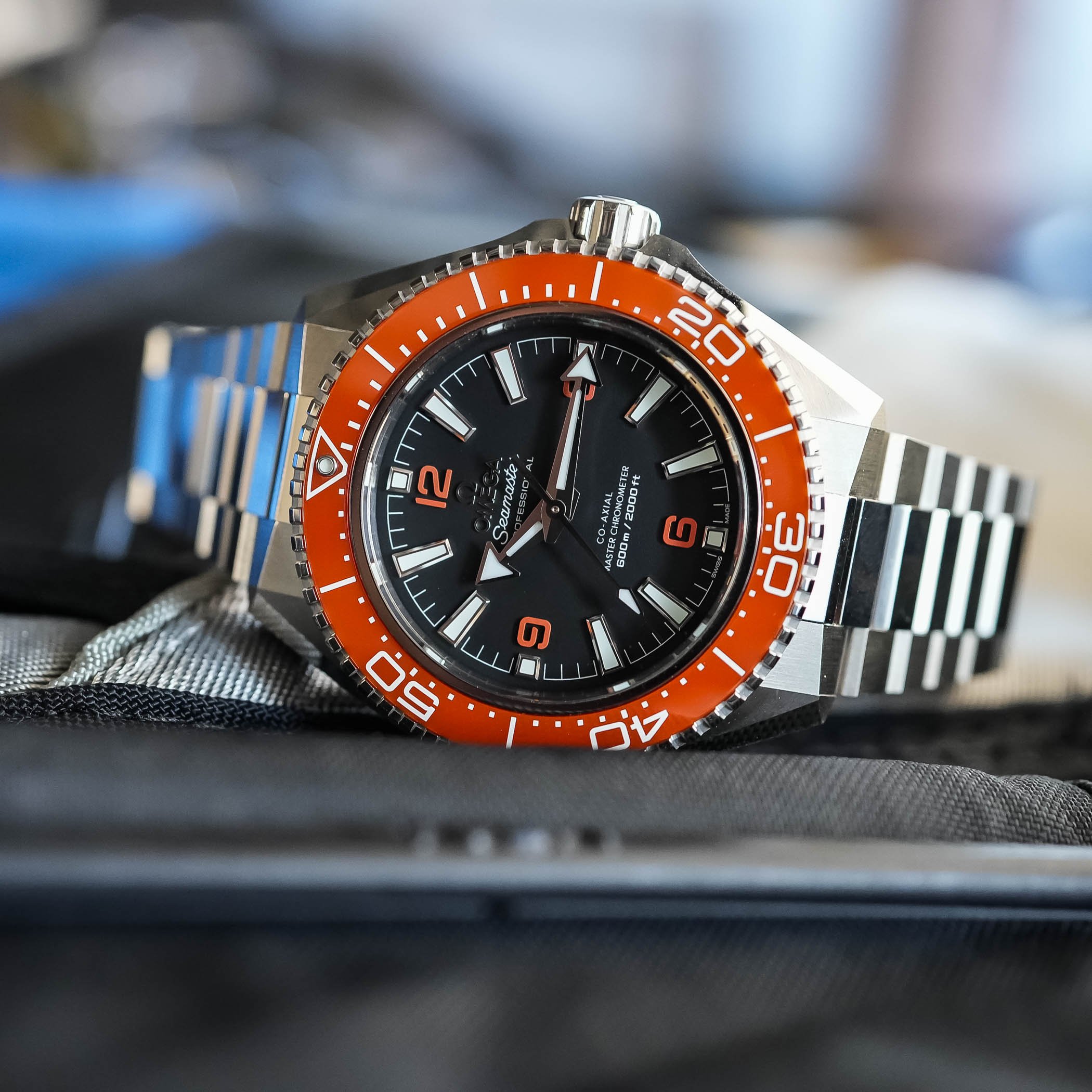
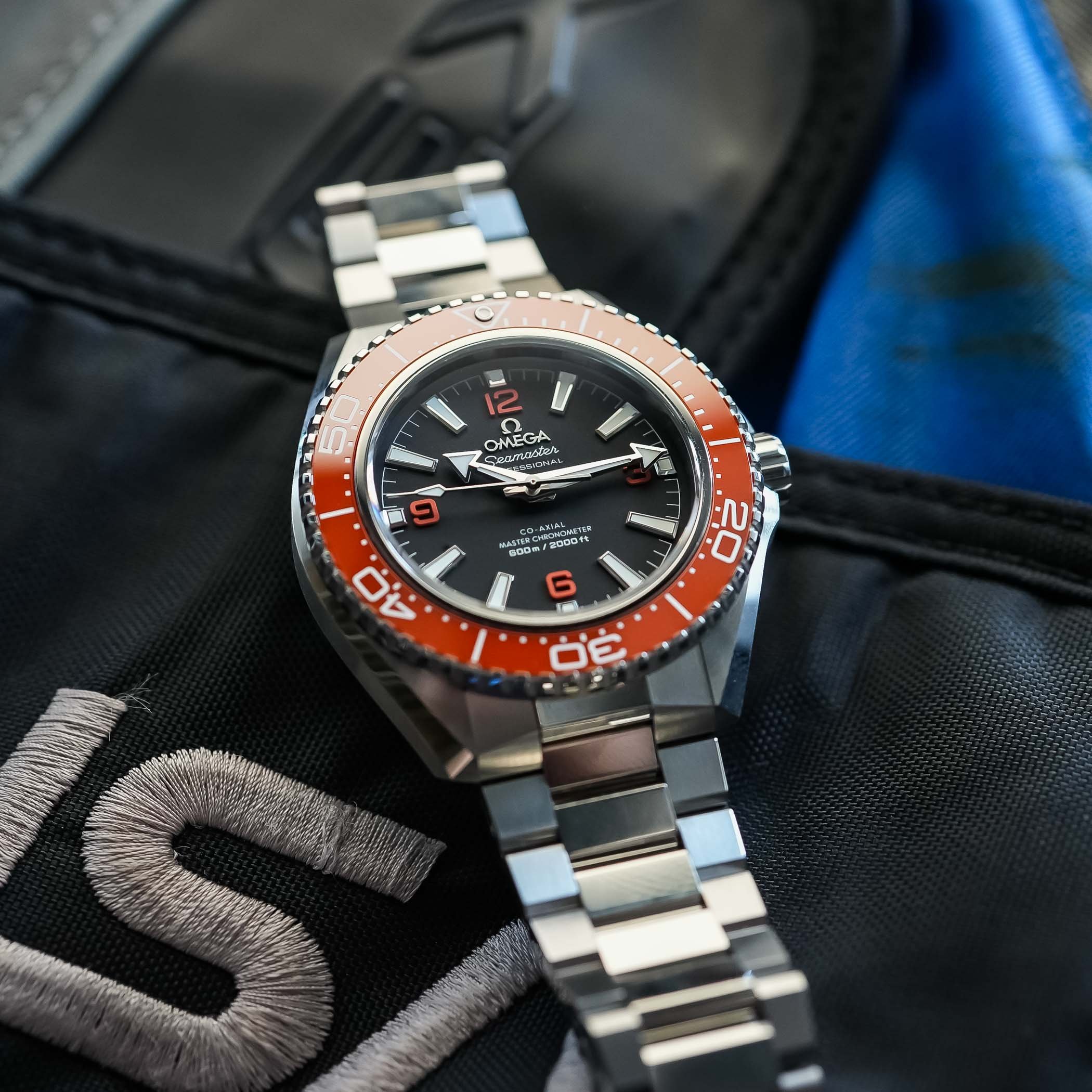
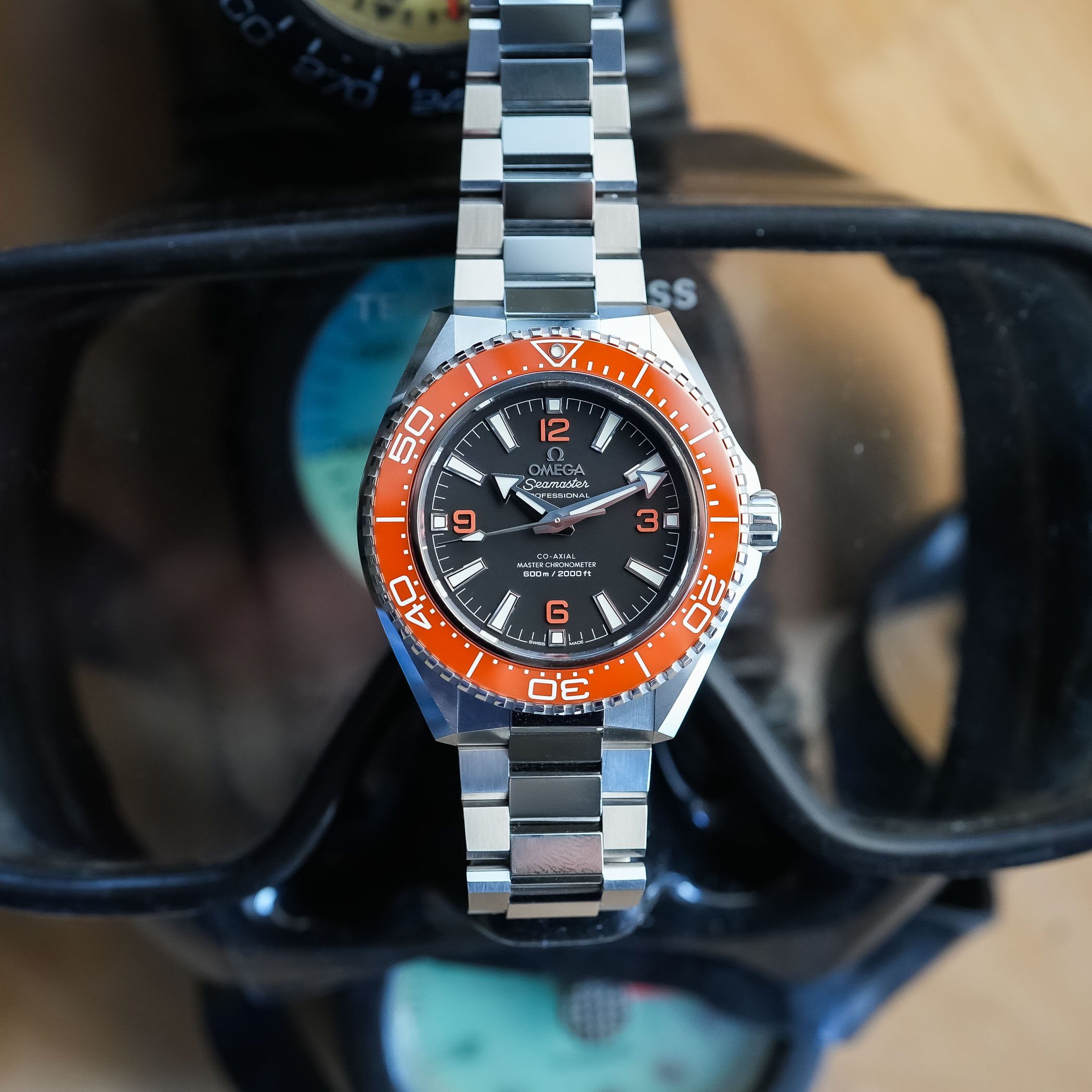
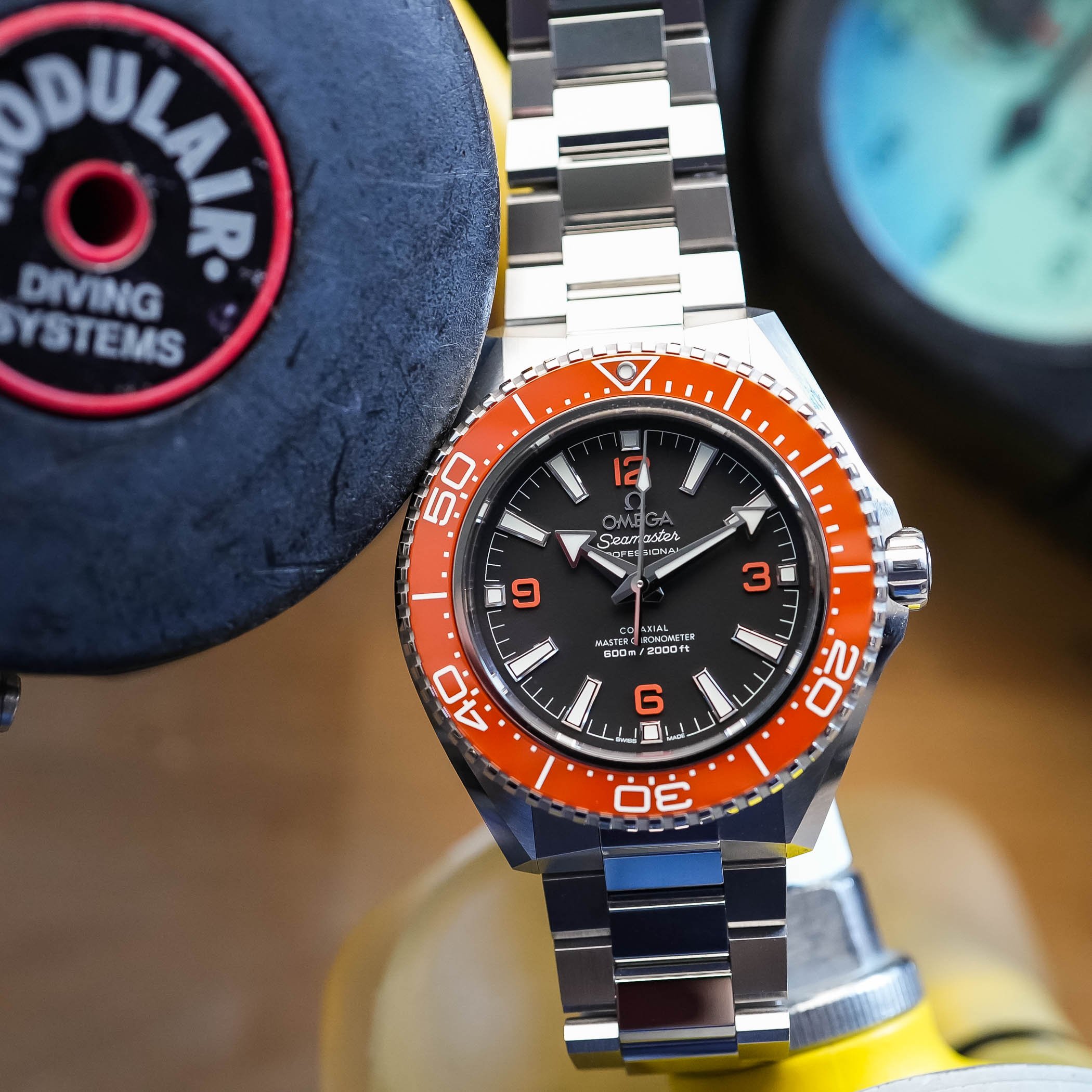
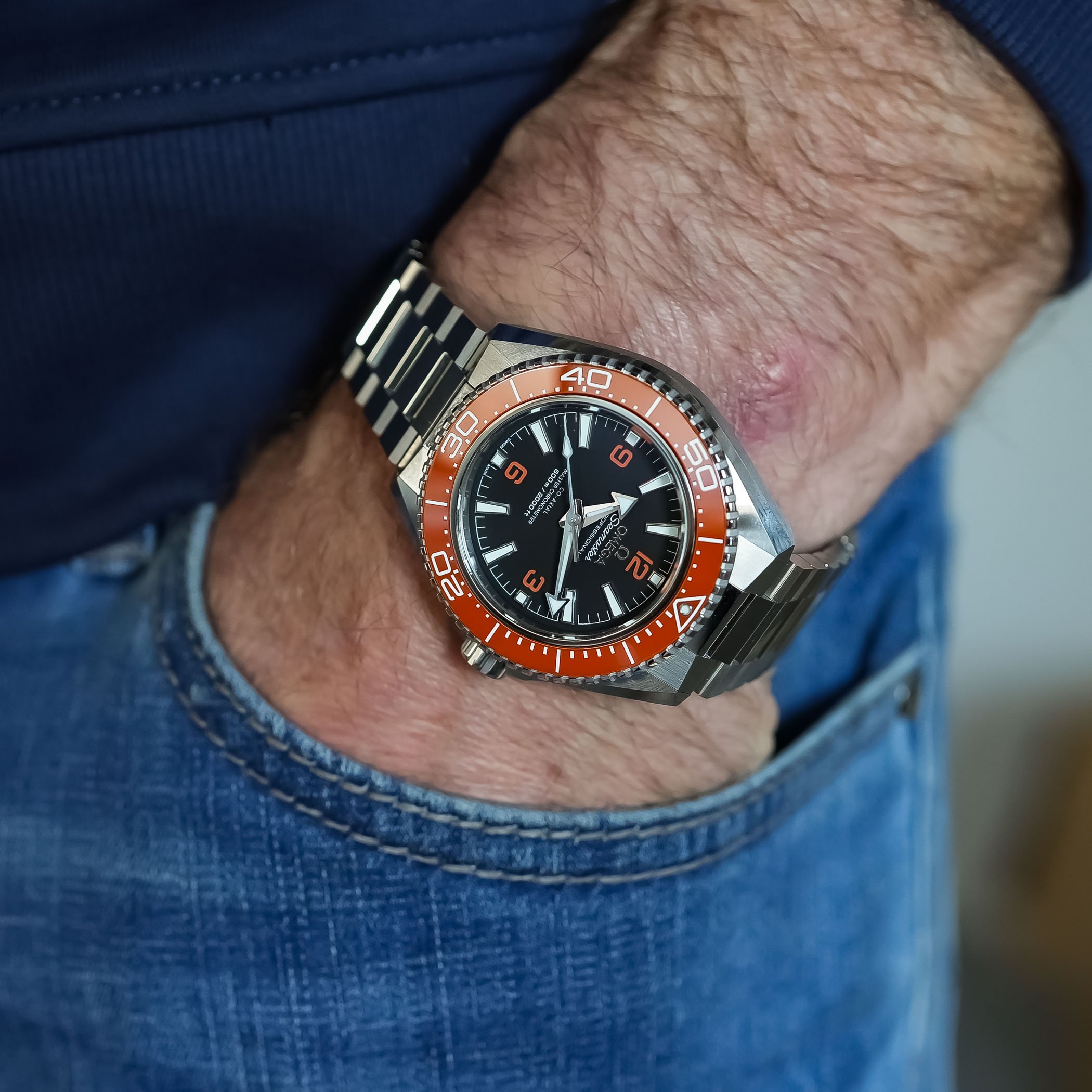
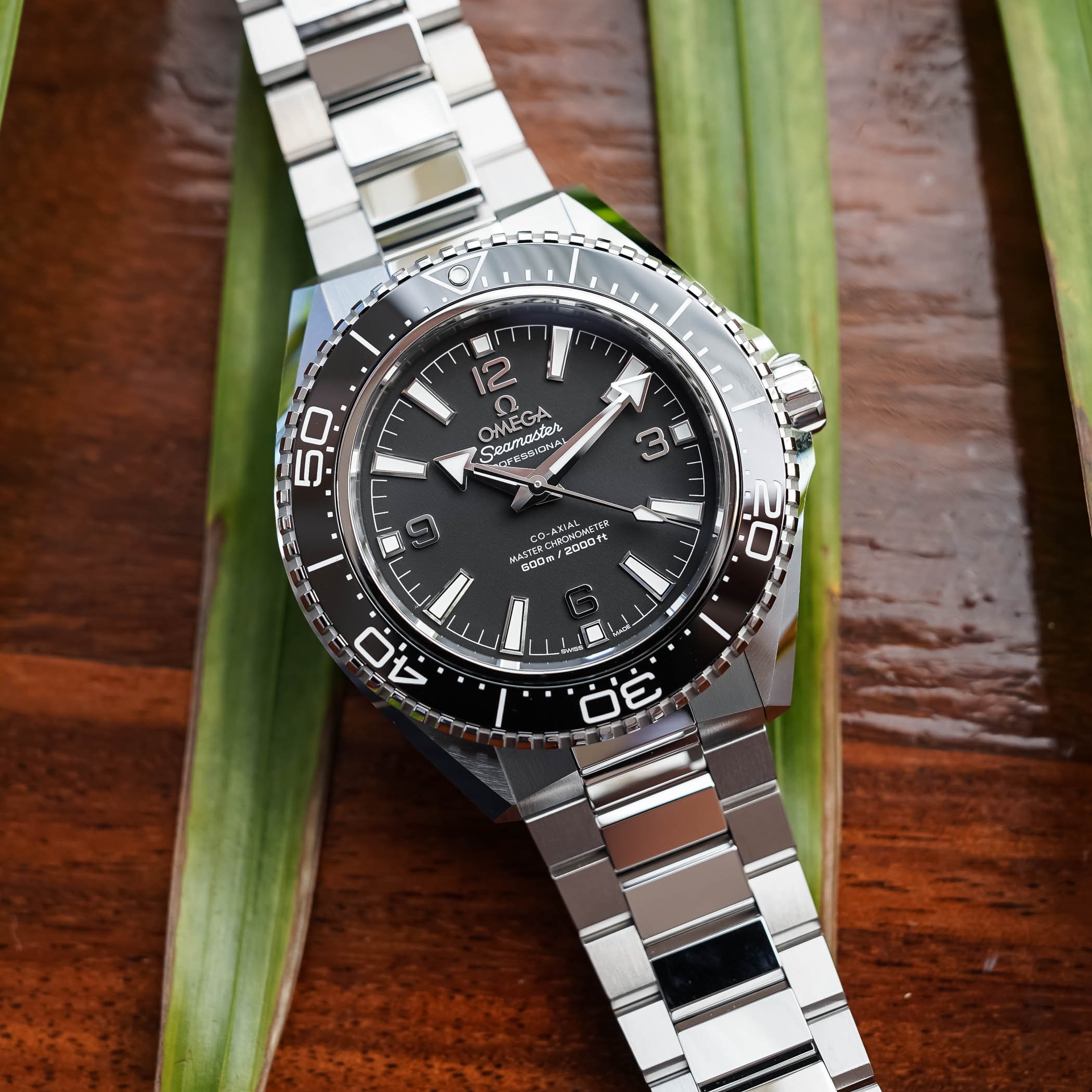
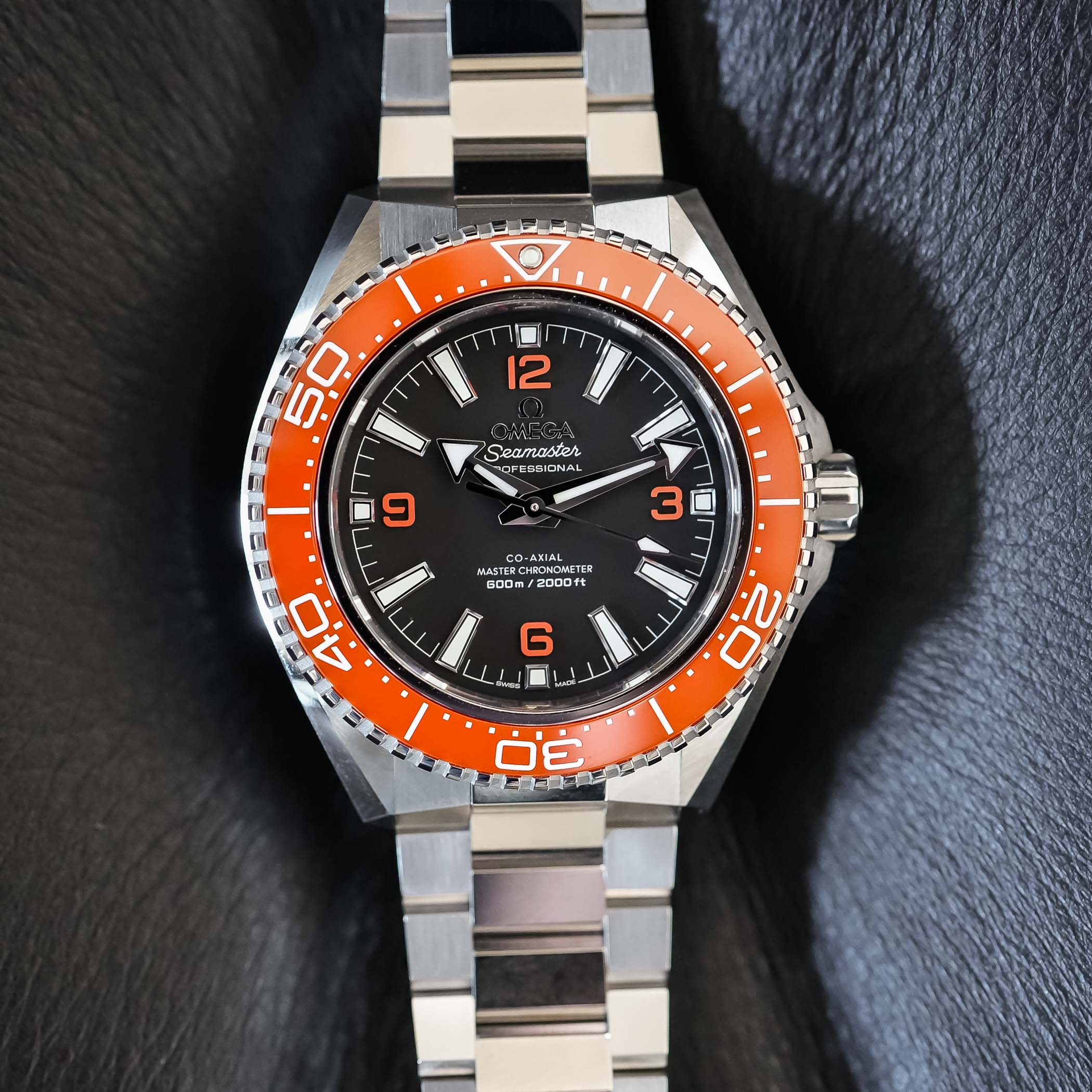


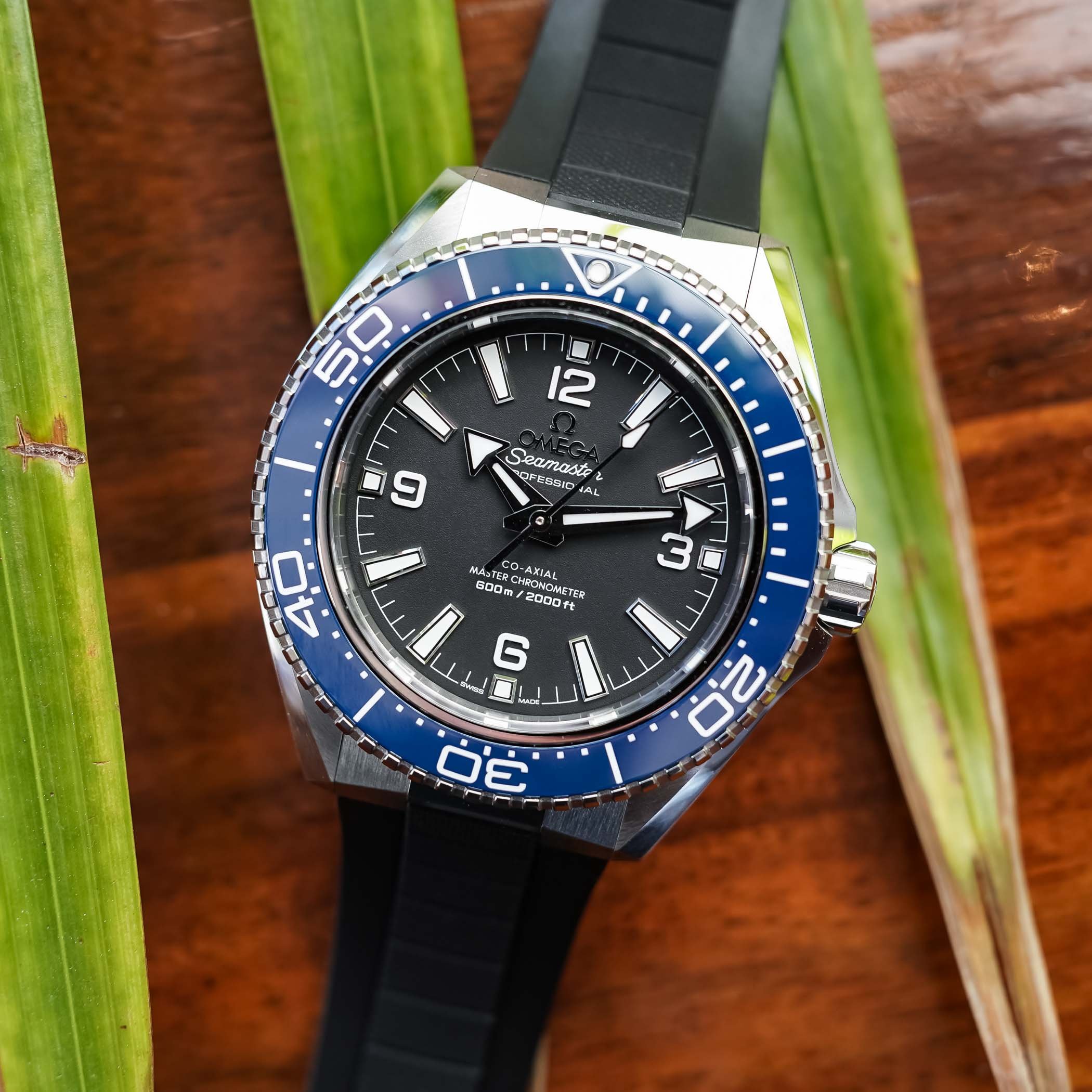
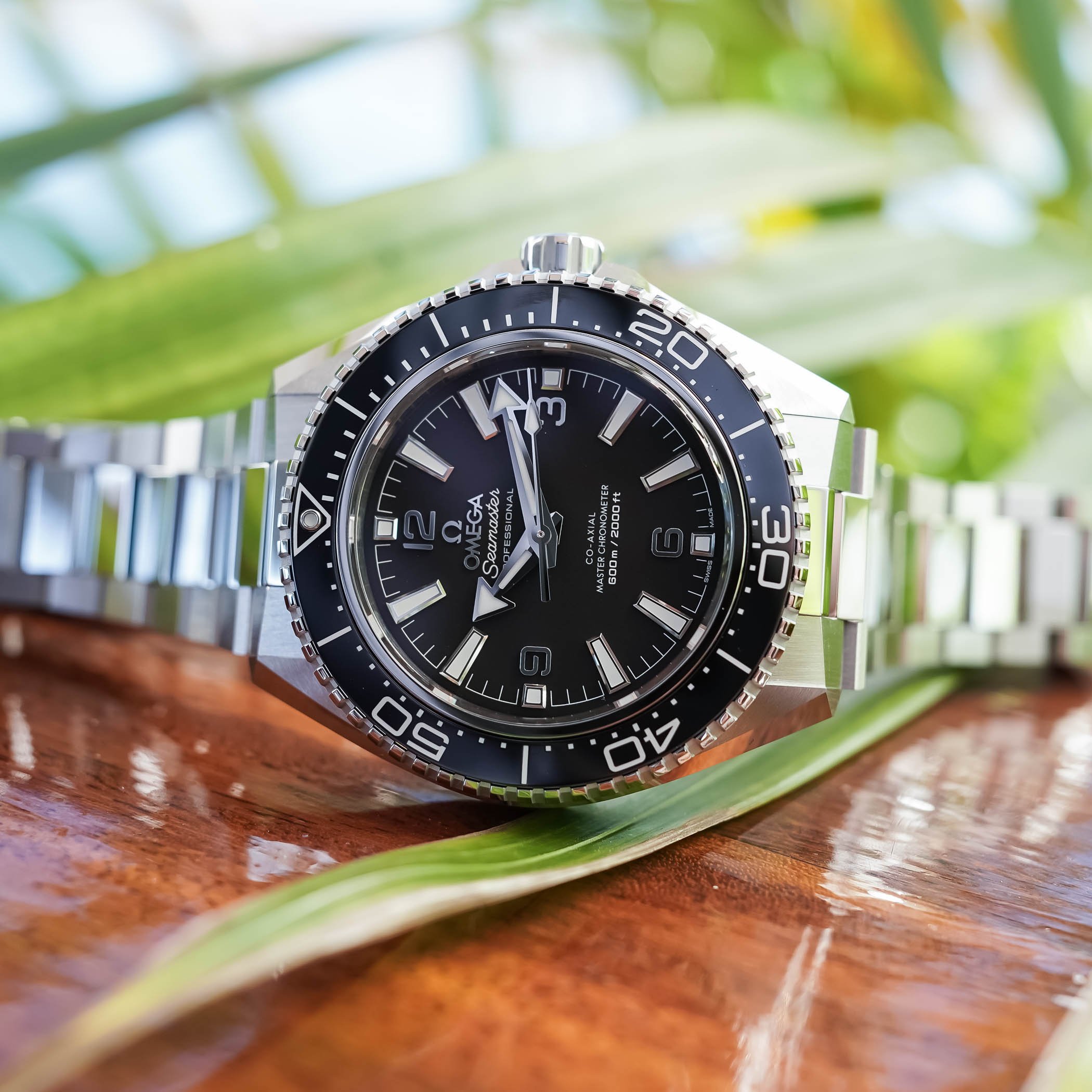
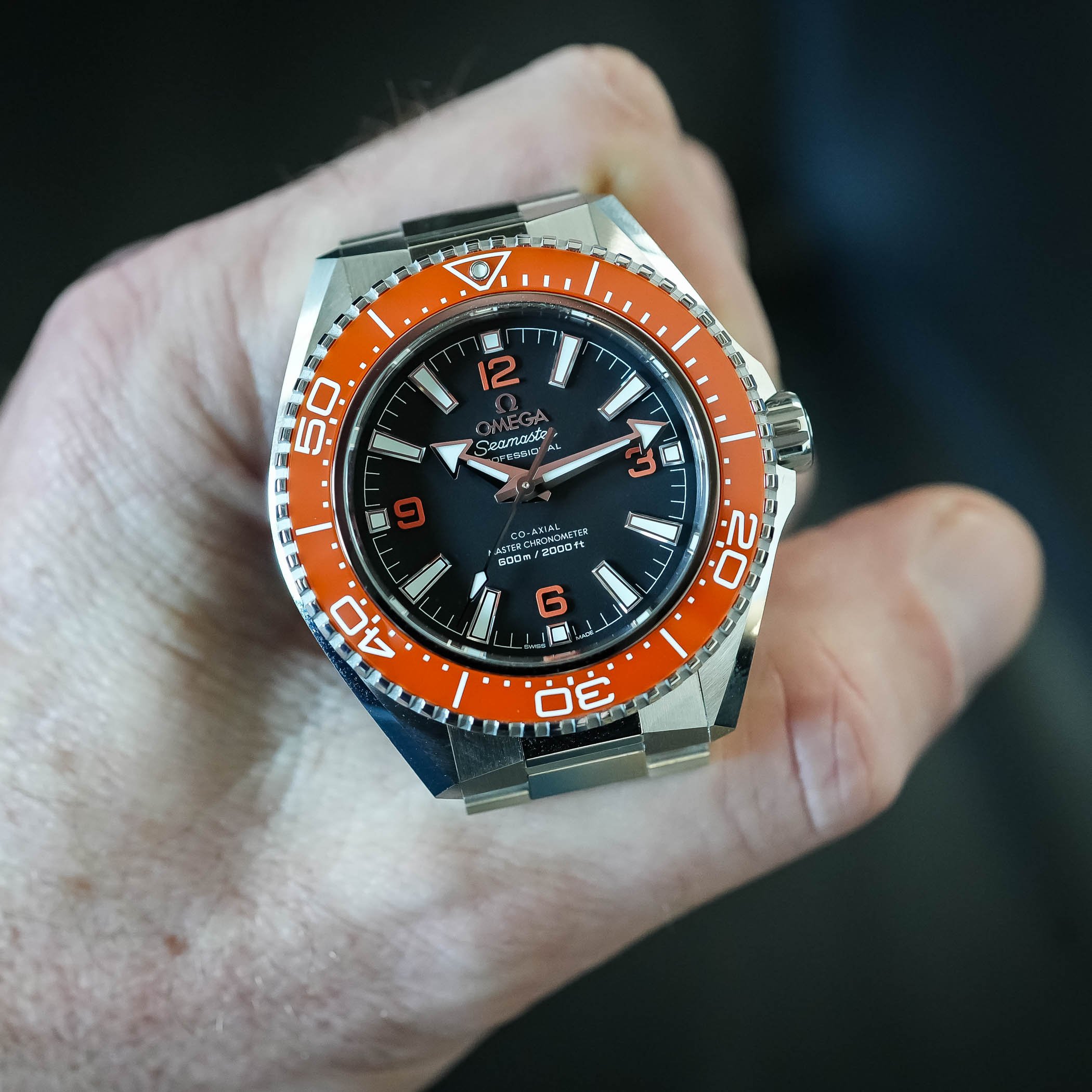
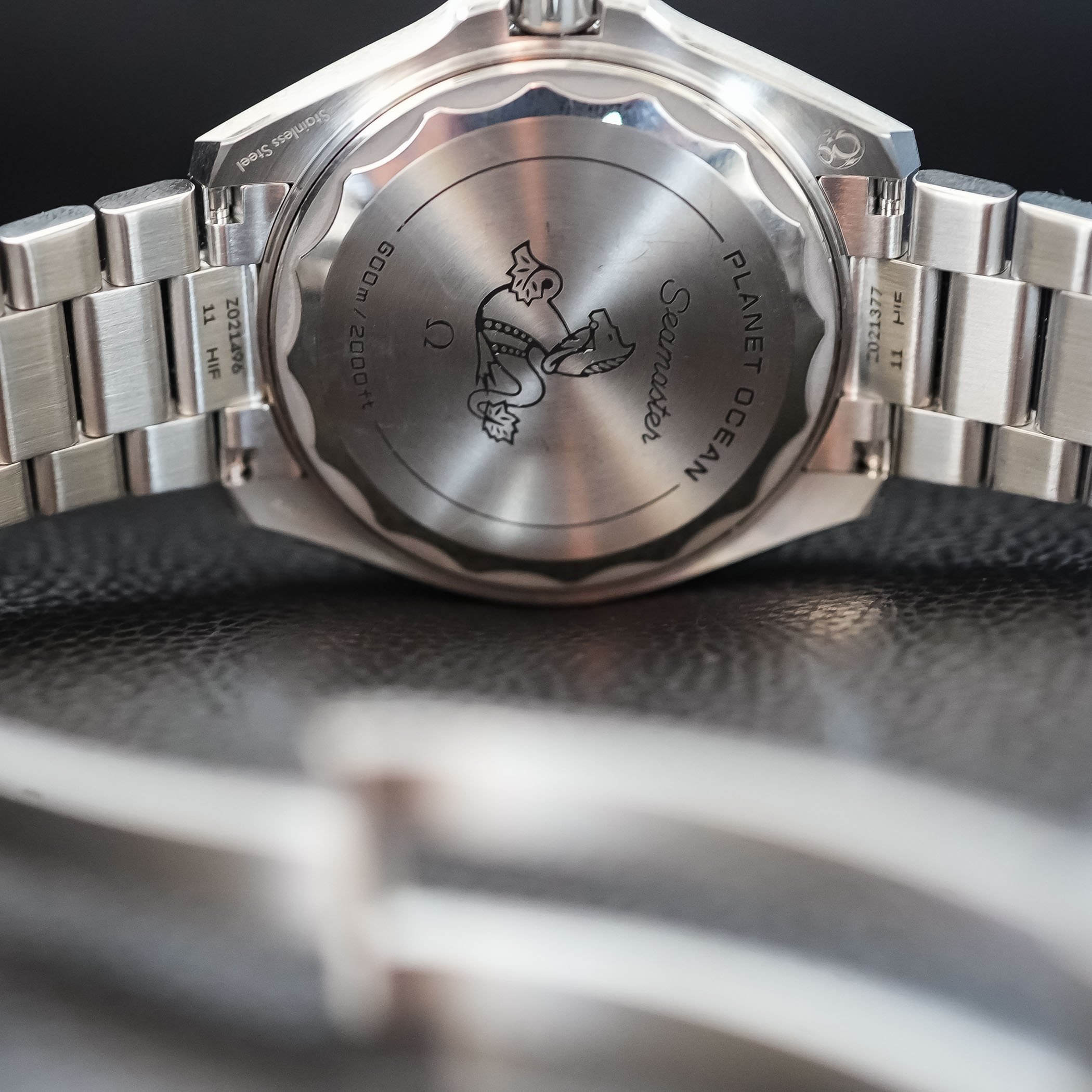
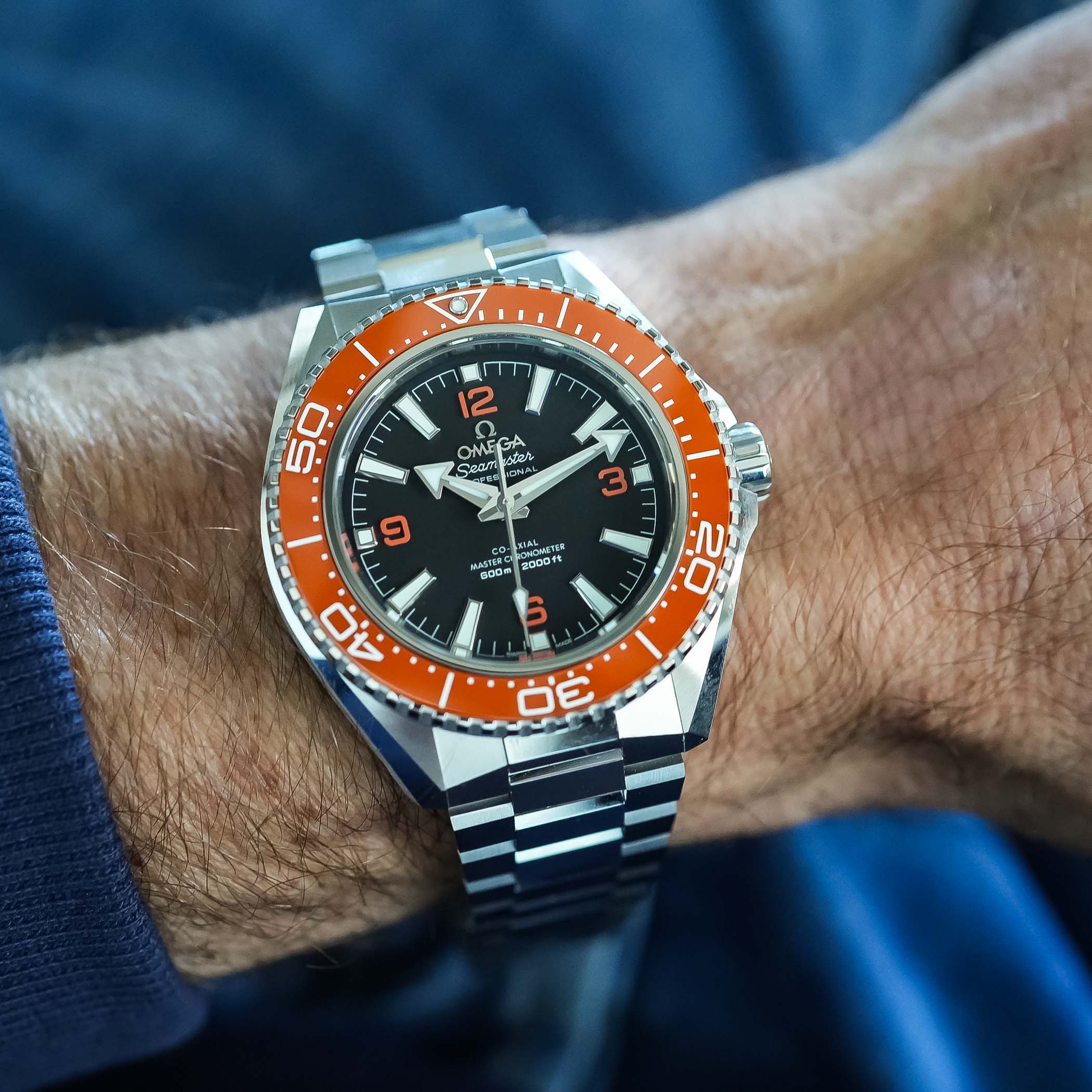


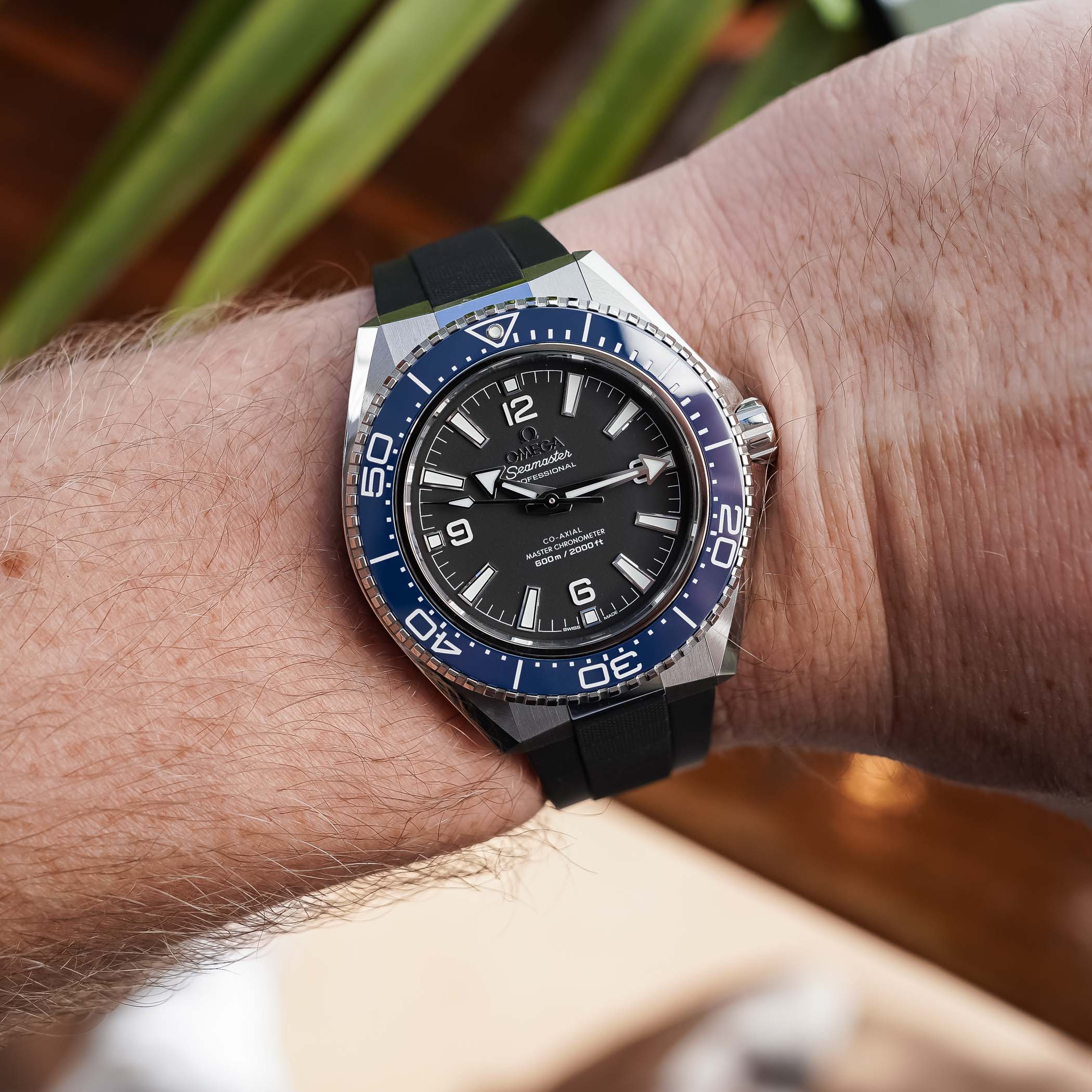


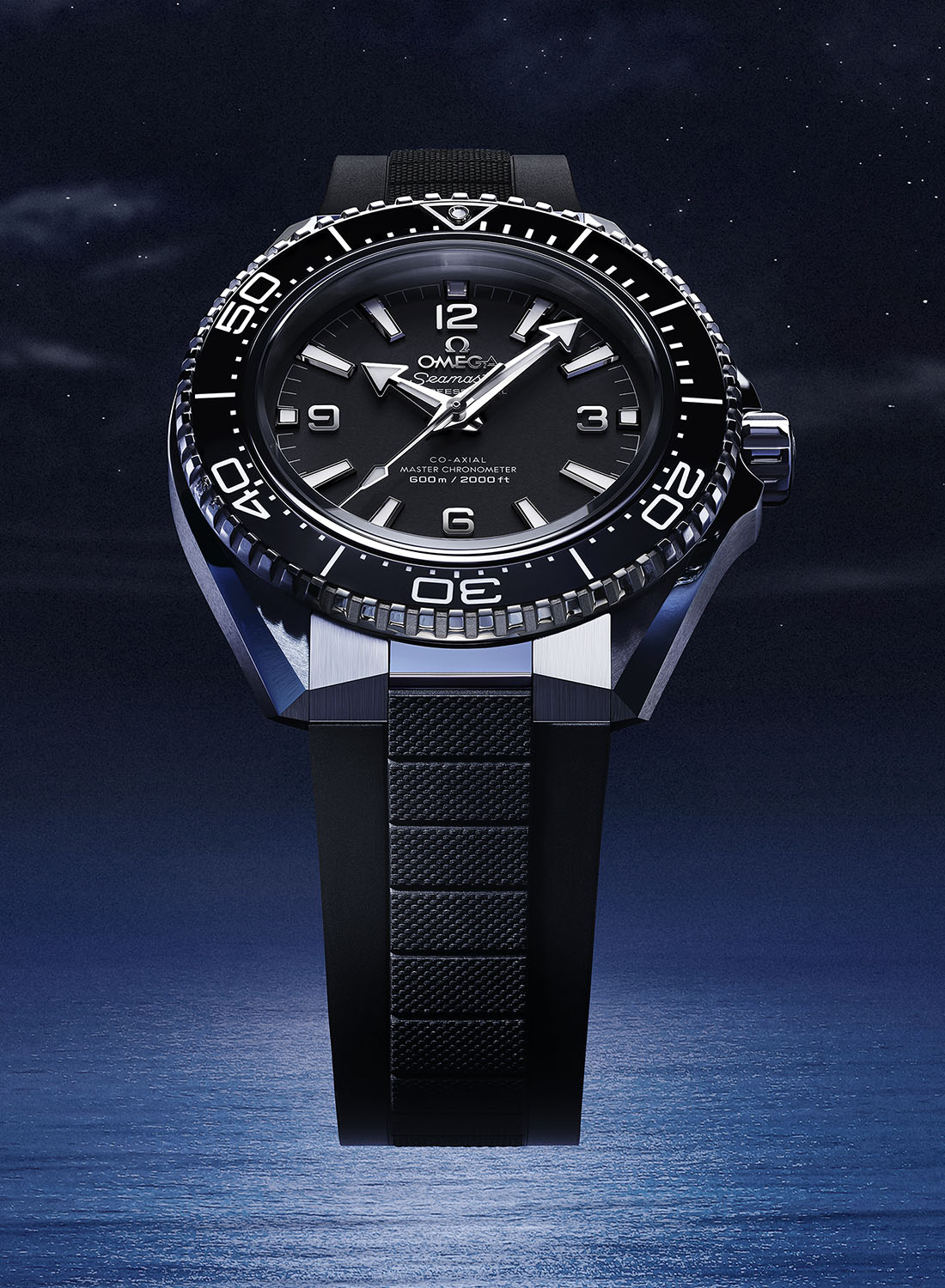
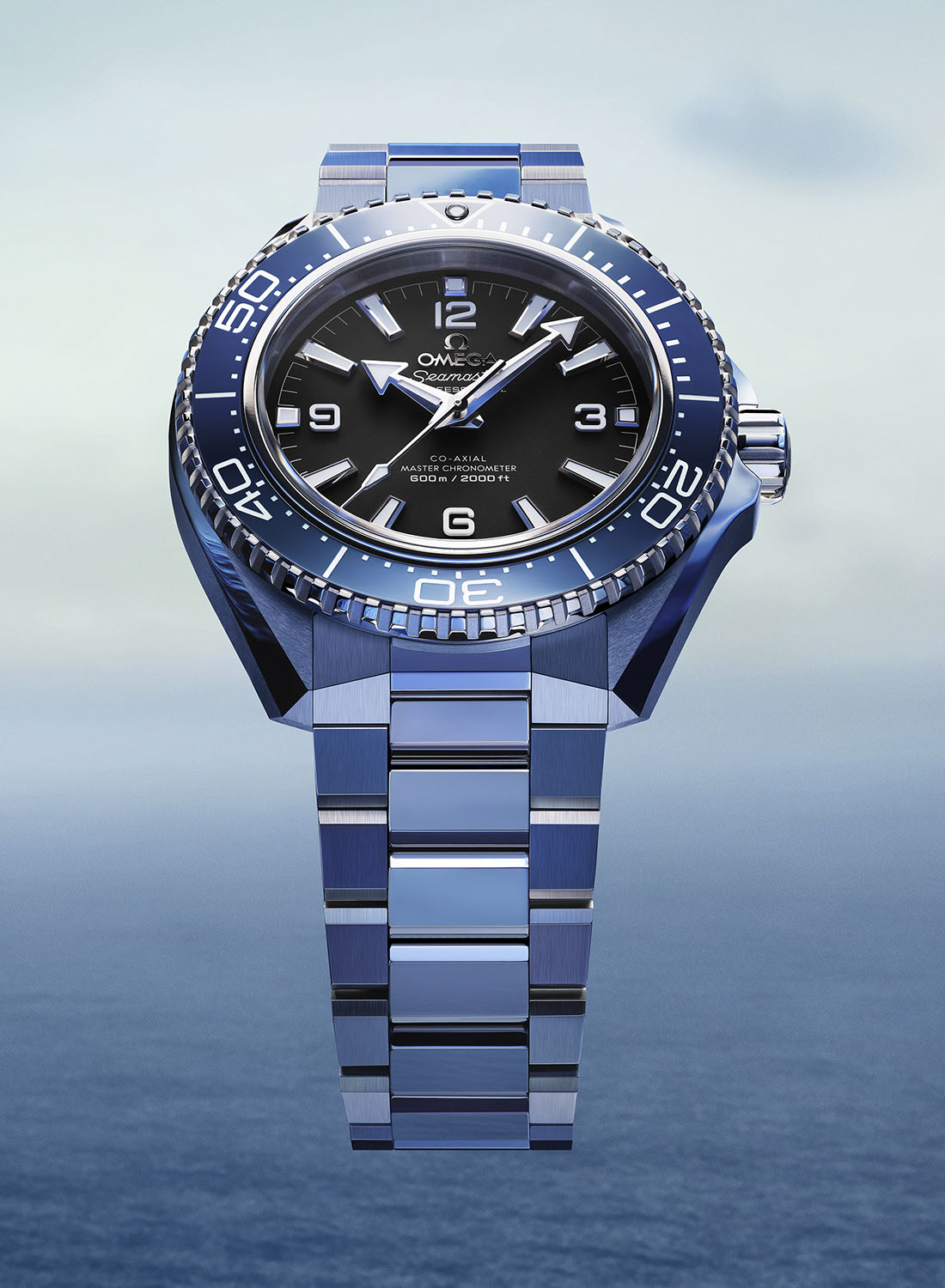
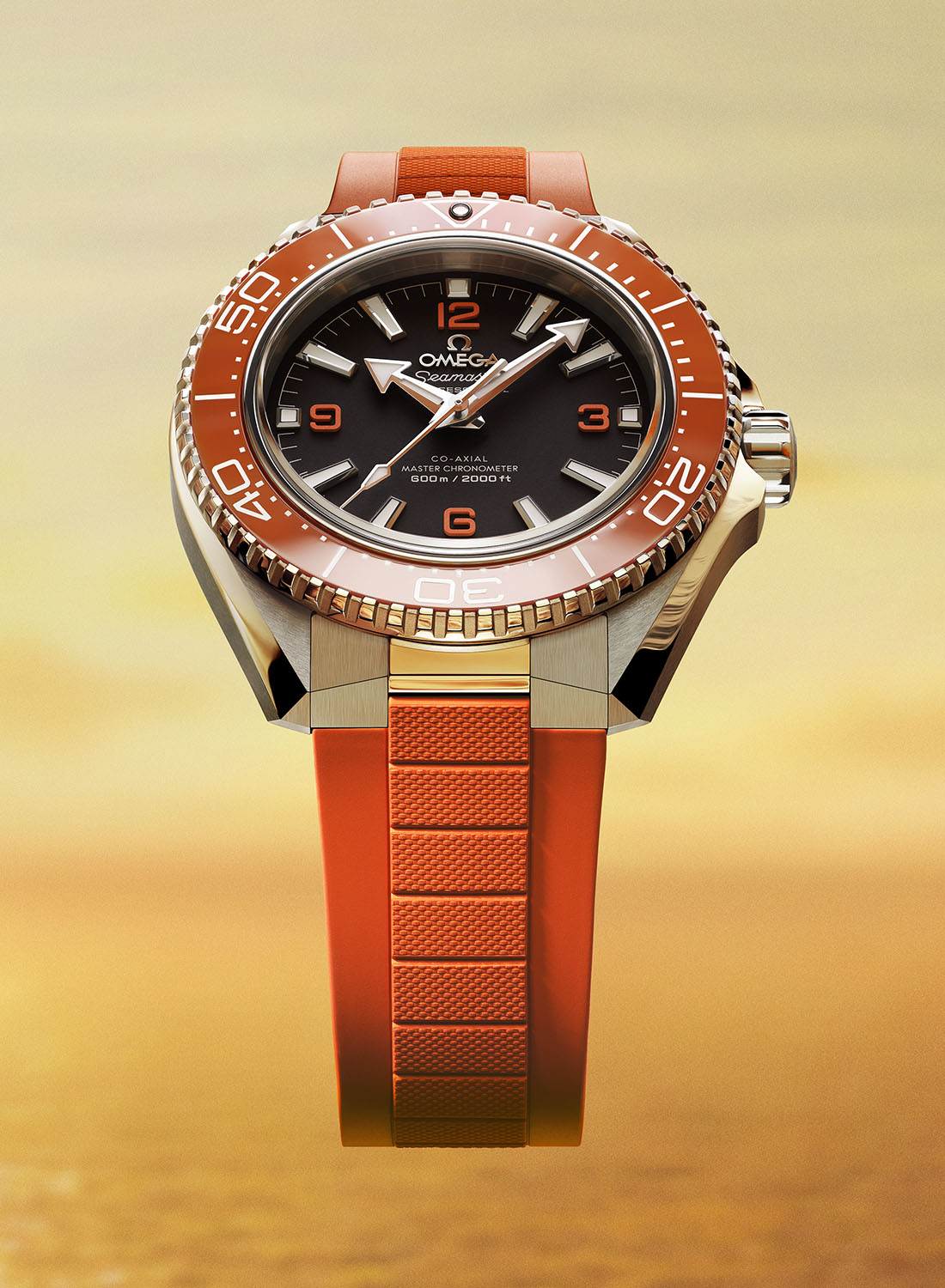
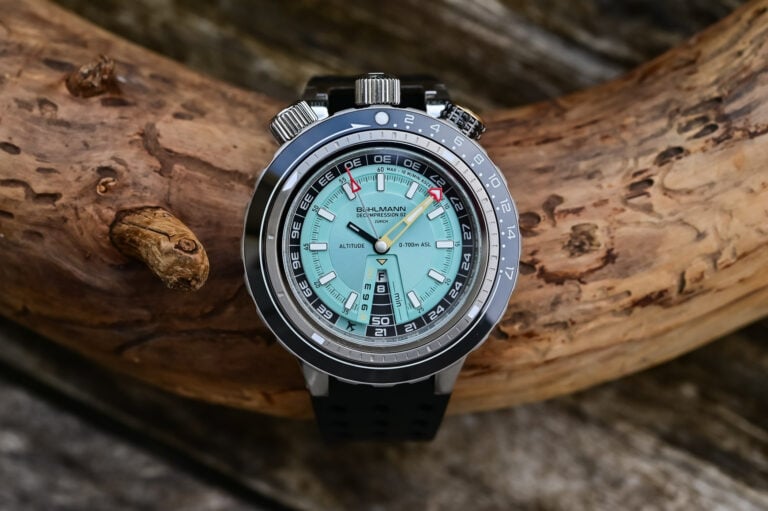
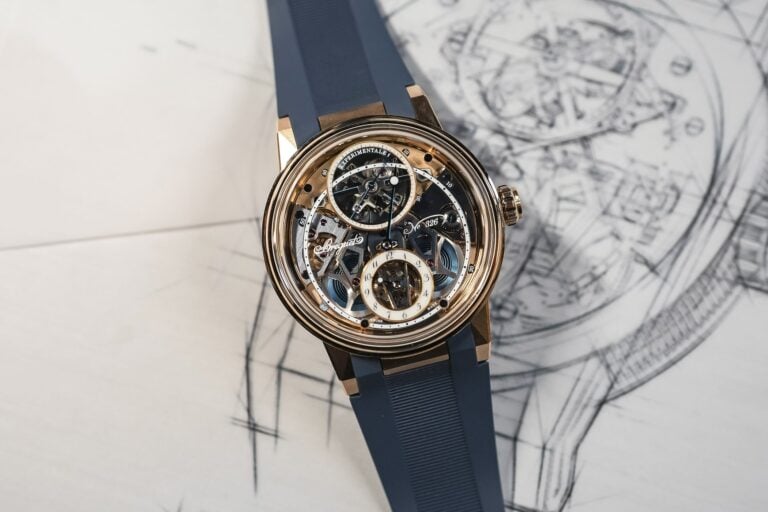
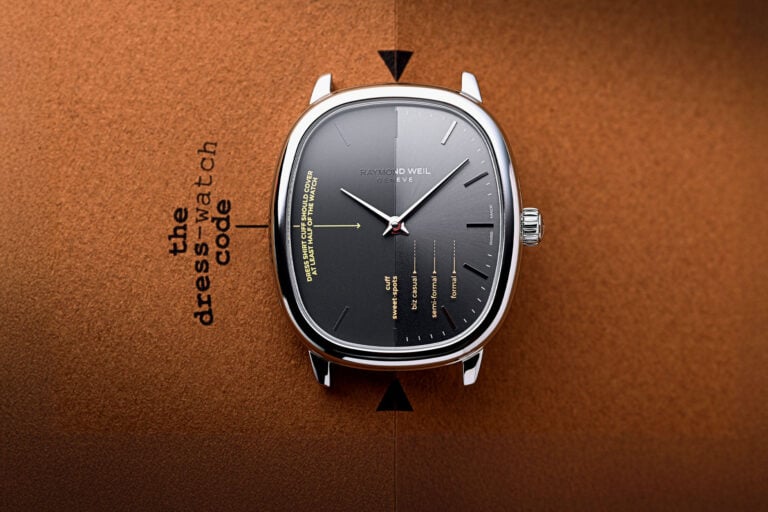
10 responses
ugly watch 🙁
An absolutely beautiful watch !!!!!!!!!!!!!!!!!!!!!!!!!!
“The Seamaster PO has always been a somewhat beefed-up version of the Seamaster Diver 300M, sharing the same overall inspiration. Both watches were using 1960s models as a reference. ” Wrong. The PO definitely took part of its design inspiration from the 1962 Seamaster 300, but it also used the 1957 Seamaster 300 as a basis too. The Seamaster Diver/SMP definitely did not use any previous Omega or any other dive watch (Submariner) as its inspiration. It was of course commissioned by Jean-Claude Biver with the explicit instruction that it was to be different to anything that was on the market or that had gone before. Also, when you say – “Omega has decided to give its flagship dive watch collection its own distinct identity, differentiating it from the SMP and Diver 300M”. The Seamaster Professional (SMP) an dthe Diver 300M are the same watch. I think yiou mean the Seamaster Professional/Diver 300M and the Seamaster 300 (Heritage).
Boring and expensive… I prefer Tudor Pelagos FXD.
The design will have to sit with me for a little bit, but on first impression I much prefer this new design to the Planet Ocean of old. Would I buy this over some of Zenith’s similar offerings? I don’t know.
Personally I certainly like all the new evolutions in terms of overall design, size and bracelet. I don’t mind the lack of HEV as it isn’t required anymore, apparently (as many of us I’ll never do any saturation diving, but it’s just a matter of “I know the watch can do it”).
What I do miss (again, personal tastes & requirements…) is the date window, a sapphire caseback to admire the movement and finally the LiquidMetal in the bezel, which was specific to the PO I believe. Just adding the option of a date window could however suffice for me to consider a possible purchase…
If they came out with a creamsicle version like they had in the last PO (with a white dial and orange bezel), I’d consider buying it. After one day, I really like this new configuration after being a bit turned off at first. Nobody likes change. But I do prefer a date window on my watches, so I hope they come out with a date window variant at some point.
That bracelet is gorgeous but an absolute scratch magnet. Tool watch, I think not.
The polished steel seems out of place here….i wil wait to see the titanium version which makes more sense in a watch like this, hopefully with a nice sublime and elegant color combination.
I have now seen the new PO and handled all the variants, on stainless steel bracelets and rubber straps. In doing so I was able to compare the new PO to the 3rd generation PO (Old PO) and the Semaster Diver. So what did I learn. First, my initial impressions that the 70s “brutalist” case would contrast with the 50s/60s dial and bezel were correct. The New PO is an incongruous watch in the sense that it is made up of disparate elements that never really come together in a coherent whole. The good bits: The lower part of the case is really well done, sculpted and very like the “Baby PloProf” mixed with a bit with the Seamaster SHOM. The caseback is not quite as bad as the publicity photos show it to be. The engravings are deep, laquer filled and crisply done. Whether you like it or not is a matter of personal taste. The rubber straps are excellent. Soft but feeling durable and high quality and far softer and more comfortable than the rubber straps fro the Seamaster Diver. Of the three versions (in terms of watch heads) available the one I expected to like the least, the Black and Blue (Bruiser(?)) was by far the best. The white varnished numerals matched the white enamel markings on the bezel and the matte dial suited the whole aesthetic. On the rubber strap if was incredibly comfortable. Pity there is no blue rubber strap yet as that would really make it even better. The Black dial version was an anti-climax. The rhodium plated numerals “disappear” into the very matte dial and do not match the white enamel bezel markers. A Liquidmetal bezel would have been a much better fit here, in a similar way to the black/blue gradient dial version of the Ultra-Deep. The orange version was quite a bit of fun, a bit bright and due to the use of ceramics it will never match the subdued metallic tone of the 1st Generation PO orange aluminium bezel. Perhaps Omega should have gone back to aluminium as they have on some of the Diver watches and the Seamaster 300 Heritage. Having said that if you like your watch to make a “statement” the New PO orange will do that. The lack of a the HeV was not really noticed even though I was wearing my Green dial Diver and had access to a Black dial Old PO as well. Now the Bad Bits: The bracelet is a disgrace. It is tinny, feels insubstantial and has lost any feeling of quality. Compared to the Old PO it is thin and the tapering is far too severe, it should be noted that the Old PO bracelet does taper from 21mm to 18mm, so it is not as if Omega have not done this before. Also compared to the new Speedmaster “Nixon” bracelet it is rubbish. It is so light it feels like titanium. The clasp is not really better just different and the overall feel is of a watch that does not cost up to £8000. Finally, the transitions between the top and sides of the bracelet were, shall I say, “sudden”, not sharp enough to be a problem but not chamfered well enough. The bezels on all the Blue/Black and Orange New POs that i tried (about 8 or 9) were also a disgrace, they were loose and could be manipulated to go backwards if you used the amount of play in them. This is not what you want on a Seiko Prospex costing £1000 let alone a so-called “high-end” Omega diver. Perhaps these were early production issues, but I think not, the Seamaster 300 Heritage suffers from the same excreable quality when it comes to the bezel, unless you opt for the almost illegible “Summer Blue” or the overpriced bronze gold one. Compared to the Old PO this is a huge step backwards. It is also very poor when compared to the Seamaster Diver as well. Both the Diver and the Old PO have rock solid bezels that are a joy to use, they ratchet well, the Old PO in particular sounds incredibly smooth and damped as it is rotated, it even makes a Submariner feel insubstantial! The New PO is clicky, tinny and sounds cheap. It would be a poor bezel action on a Seiko or a Hamilton and nowhere near what is needed to compete against Rolex or even Brietling. Also 50% of the bezels I looked at were not perfectly aligned to the dials either. Add in the poor fit and finish and I would not feel confident diving with a new PO and I have dived, sailed, snorkeled and white water rafted with my Omega dive watches (36.25mm SMP, 42mm 1st Gen PO, 45.5mm 2nd Gen PO Chronograph, 41mm Seamaster 300MC and now a 42mm Seamaster Diver) for 35 years. The Black dial version did not have any play in the bezel on either version I tried but the bezel action was just as poor as the black/blue and the orange. Final impressions, the New PO does not feel like a “step up” from the Diver. The bracelet is too flimsy and poor quality, the bezels are disgraceful and feel cheap next to the Diver. Recently the Diver bracelet was revised with a smoother finish being applied, so although there is still not taper it feels more comfortable than before (I had a Blue dial 2018 version that I sold to get a Green dial 2003 version and the difference is marked). How an Omega salesperson is going to upsell a customer from a Diver to the New PO is beyond me. Assuming the customer handles both watches there is no comparison in quality, the Diver takes the win, and the New PO also feels much smaller on the wrist that the Diver due to the shorter lug to lug. So what you are getting for your considerably increased purchase price is not clear. Against the Old PO apart from the more compact dimension and “newness” the New PO is a massive step back in quality and feel it also never quite seems to be a consistent/coherent design, but that is a purely personal thing. Conclusion: the new PO is definitely not for me. The quality is very poor (it might improve going forward but I doubt there is anything that can change the feel of the bracelet) and the reduced dimensions do not make up for a flimsy, cheap feeling bracelet and a bezel that would be a disgrace on a £500 Seiko. As I am looking for a Planet Ocean to add to my collection, having been without one for several years following the sale of my PO Chronograph, I think I will stick to the PO GMT “Oreo” that is still on sasle along side the New PO. Sorry for the long post but I thought readers might like to read what the New PO is actually like in real life from a fellow reader who is a big Omega fan.